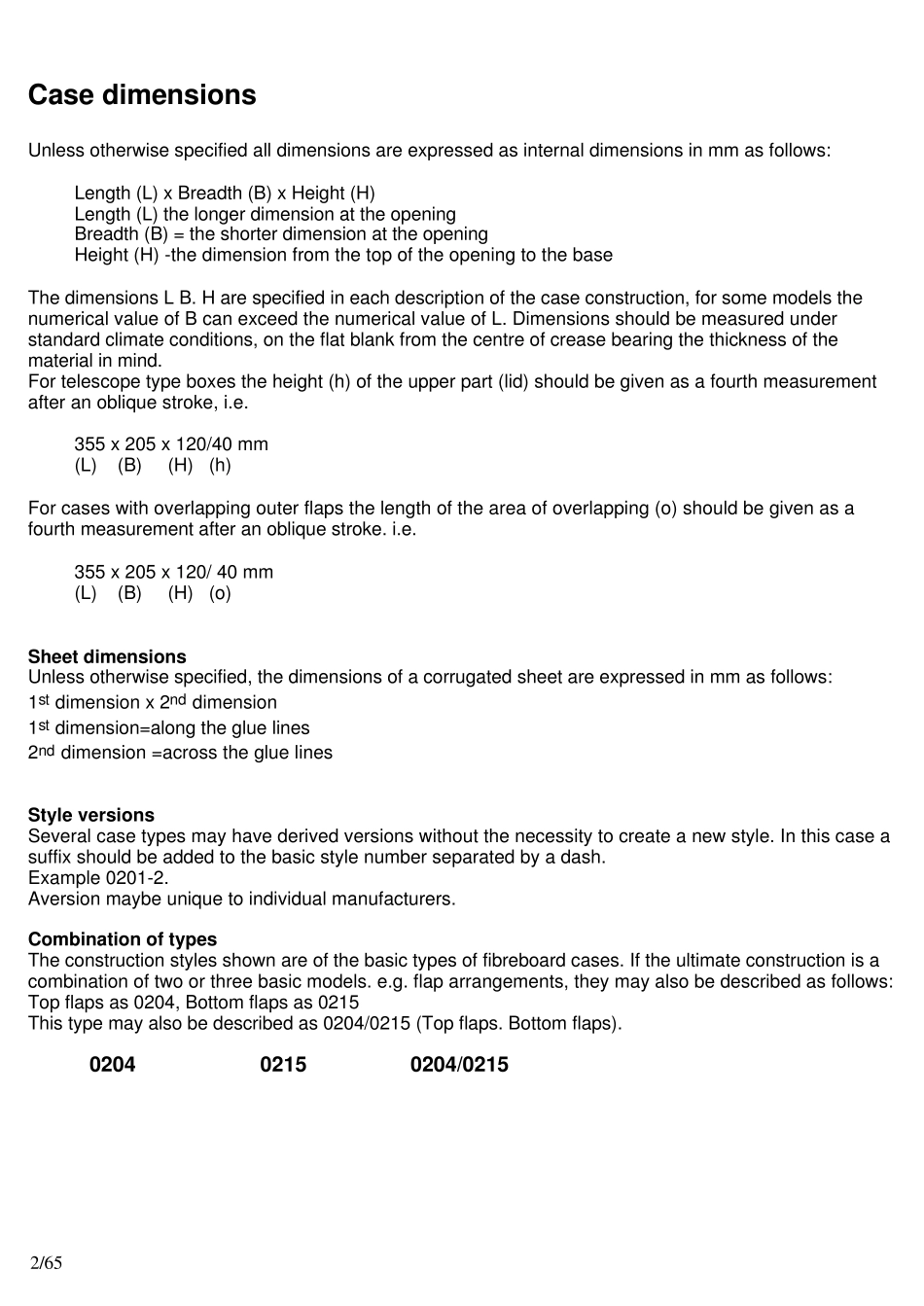International Fibreboard Casecode This code which is prepared in collaboration with ESBO (The European Solid Board Organisation), contains a methodical presentation of all existing box design styles, a code number being assigned to each design. As a reference document, the code is used world-wide and it has been adopted by the United Nations. Symbols used in drawings and computer systems. Drawing symbolComputer codeDescriptionCuts, scores, slits etc.CLcontours of erected cases or cutting lines of case blanksSCslotted cutsCIcrease lines (inward bend)COcrease lines (outward bend)SIslit-score lines (inward bend)SOslit-score lines(outwardbend)DSdouble-score linesPLperforation linesSEsoft edge cutting linesTPtear perforationManufacturer's jointSJStitched jointTJTaped jointGJGlued jointOpeningsPChandholds strippedUChandholds non-strippedNChandholds non-strippedFlute directionFDFlute direction indicator1 /6 5Case dimensions Unless otherwise specified all dimensions are expressed as internal dimensions in mm as follows: Length (L) x Breadth (B) x Height (H) Length (L) the longer dimension at the opening Breadth (B) = the shorter dimension at the opening Height (H) -the dimension from the top of the opening to the base The dimensions L B. H are specified in each description of the case construction, for some models the numerical value of B can exceed the numerical value of L. Dimensions should be measured under standard climate conditions, on the flat blank from the centre of crease bearing the thickness of the material in mind. For telescope type boxes the height (h) of the upper part (lid) should be given as a fourth measurement after an oblique stroke, i.e. 355 x 205 x 120/40 mm (L) (B) (H) (h) For cases with overlapping out...


